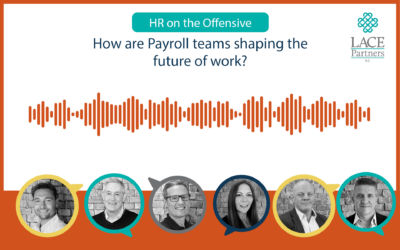 In this three-part series, Tim Ringo from our team considers whether home and hybrid working is the ‘silver bullet’ for greater productivity that many purport it to be – and what that might mean for your organisation’s working practices.
In this three-part series, Tim Ringo from our team considers whether home and hybrid working is the ‘silver bullet’ for greater productivity that many purport it to be – and what that might mean for your organisation’s working practices.
The COVID19 pandemic was the gun that fired a silver bullet, shattering outdated workplace practices, leading to a marked increase in engagement and ultimately people productivity increases. It killed off bad workplace behaviours and habits that had developed over the past twenty years of the digital revolution, disrupting the workplace and knocking us onto a better path that has super-charged people engagement and productivity for the first time since the dotcom bubble of 1999. One of the biggest changes to come from COVID19 pandemic was the significant rise (and continued adoption) of home and hybrid working.
A ‘silver bullet’ is “something that acts as a magical weapon; especially: one that instantly solves a long-standing problem.” (Miriam-Webster dictionary).
So what has it fixed, if anything? In this first of our three-part series, we’ll explore the background and context of hybrid working, and some of the research evidence about its impacts, in greater detail.
A recent headline from the CIPD reports their research findings that a : “Growing number of employers report increased productivity as they embrace home and hybrid working”. We’re seeing this in our clients too – many are reporting a similar uptick in people engagement resulting in more productivity for home and hybrid workers. The CIPD went on to bolster the point further:
- There have been improvements in organisational productivity, with more than two-fifths (41%) of organisations who say homeworking now believing that more home/hybrid working has increased their organisation’s productivity/efficiency.
- Employee productivity also remains steady, with more than two-fifths (43%) thinking that employees in their organisation are generally more productive when they are working from home/in a hybrid way.
- Overall, the findings show substantial improvements since the last survey in December 2020, when a third (33%) of employers said that the increase in homeworking had increased their organisation’s productivity/efficiency, while 23% said that it had decreased it.
What does this mean for productivity?
Perhaps, like new vaccine technologies, this improvement in productivity can be counted as a positive development coming out of the pandemic? The truth is people productivity has been stagnating or falling in most regions of the world over the past twelve years or so. This is following the last great global crisis, the Great Recession, where investment in people shrank dramatically in the years following (and has only recently recovered). This has developed into the longest period of stagnant or falling productivity since measurements began over 120 years ago. The UK in particular has hit this productivity cliff.
Could it be that recent crises have knocked us on to a better path when it comes to the workplace and working practices? Has the crisis-driven acceleration of a move to home working, hybrid working, and flexible working actually been a large scale social experiment that is paying off in more engagement and productivity? Are the challenges from an organisational perspective worth it in the long run?
Greater data is pouring in that shows that the percentage of people doing some or all of their work at home/remotely has helped reverse declining people productivity trend. For example, research conducted by Prodoscore Research Council (PRC) analysed employee productivity before the pandemic in 2019 compared to the entire pandemic year of 2020. As a result, productivity-related comparisons could be made – comparing 2020 vs. 2019 year-over-year shows greater productivity in every single month (and this has continued into 2021 and 2022). So, this looks like a welcome development we have stumbled into. Or did we stumble into it? Over the past two decades, as home and work technology and data/broadband networks have become more powerful and robust, more and more people have opted to work away from the office some, or most of the time – the impact on productivity has been “astonishing”. The fact is that this productivity improvement ‘silver bullet’ has been hiding in plain view for quite some time.
Take for example this pre-pandemic article. In 2018 an Inc. Magazine headline appeared: 2-Year Stanford Study Shows the Astonishing Productivity Boost of Working From Home. In 2016, the jury was out on the productivity effect of hybrid working. Stanford professor Nicholas Bloom spent two years developing definitive data that paints a very different picture. Bloom found a willing company for a ground-breaking experiment in James Liang, co-founder and CEO of Ctrip, China’s largest travel agency, with 16,000 employees. Bloom helped design a test whereby 500 employees were divided into two groups–a control group (who continued working at HQ) and volunteer work-from-homers and hybrid workers.
(You can watch Bloom describe the study and the findings in his 2017 TEDx talk here). The nearly two-year study showed an astounding productivity boost (of 14% over the control group) among the hybrid workers equivalent to a full day’s work. Additionally, employee attrition decreased by 50 percent among the telecommuters, they took shorter breaks, had fewer sick days, and took less time off.
So, the evidence has been around for a while, but it has taken a global crisis for us to take notice and start to make changes in how we work, and the way in which our working environment is structured etc. Better late, than never. So, what do we do about it now we that the benefits are clear? And what about the challenges; how do we address those?
If you have burning questions in the meantime about how we can help you unpack greater productivity in your organisation, reach out via the form below and we will be in touch:






